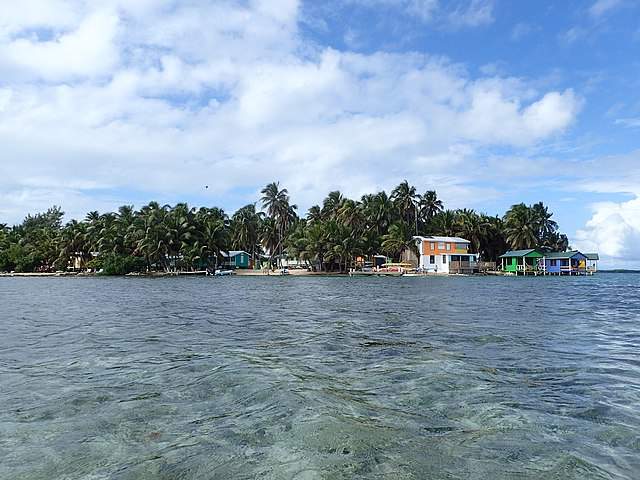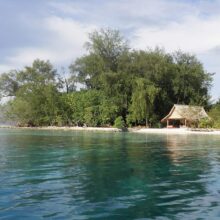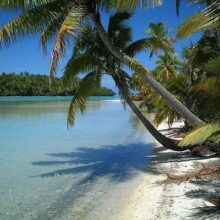Cay: Nature’s Jewels in the Shimmering Seas

When we think of tropical paradises, images of pristine sandy beaches, crystal-clear turquoise waters, and palm-fringed islands often come to mind. Among these idyllic island formations, cays stand out as remarkable jewels in the shimmering seas. A cay, pronounced as “key,” is a small, low-lying island composed of sandy or coral sediments.
Usually, Cay is found in tropical and subtropical regions. In this blog post, we embark on a journey to discover the enchanting world of cays. Let us explore their formation, unique characteristics, and ecological significance. Let us explore further, their allure as havens for beach lovers and nature enthusiasts.
Cay Formation and Geology
They are formed through a combination of geological processes. That is due to wave action, sediment transport, and coral reef growth. Many of them are originate from coral reefs. Those are created by the accumulation of calcium carbonate skeletons secreted by coral polyps. Over time, as coral reefs grow near the ocean’s surface, they create a foundation for the formation of cays.
Wave action plays a crucial role in shaping cays. As waves approach the shallow waters surrounding a reef, they break and deposit sediment onto the reef’s surface. Over time, this sediment accumulates. And they are forming a sandy or rocky platform that gradually rises above sea level.
The accumulation of organic materials, such as decaying vegetation and shells, further contributes to the growth of cays. These organic materials enrich the soil. And they are allowing plants to take root and thrive, transforming the cays into miniature ecosystems.
Unique Characteristics of Cays
They possess several distinct characteristics that set them apart from other types of islands. One of their defining features is their small size and low elevation. Cays are typically elongated or oval-shaped.
And, with their lengths are ranging from a few meters to several kilometers. Their elevation rarely exceeds a few meters above sea level. That low elevation is making them vulnerable to changes in sea level and storm surges.
They are often surrounded by shallow, clear waters. That is allowing for stunning views of vibrant coral reefs and marine life. The calm, protected lagoons between cays and reefs provide an ideal environment for snorkeling, diving, and other water activities.
Due to their proximity to the ocean, cays are subject to constant erosion and accretion. Storms, wave action, and rising sea levels can reshape their coastlines. And that is resulting in a dynamic landscape that evolves over time.
Ecological Significance of Cays
Cays play a vital role in supporting diverse and fragile ecosystems. The sandy soils and well-drained environments of cays create unique habitats for a variety of plant and animal species. These ecosystems are adapted to the harsh coastal conditions.
That includes exposure to saltwater, strong winds, and limited freshwater availability.
They provide nesting grounds for seabirds, such as terns, gulls, and frigatebirds. The absence of terrestrial predators on many cays makes them safe havens for nesting and breeding. Some cays, like the Great Bird Cay in the Bahamas, host large seabird colonies, offering incredible opportunities for birdwatching and wildlife photography.
Mangrove forests often thrive on cays, acting as important coastal buffers and nurseries for marine life. Mangroves stabilize the sediment and prevent erosion. And the mangroves provide shelter for young fish, crustaceans, and other marine organisms. These dense root systems also filter pollutants. And it is improving water quality in the surrounding ecosystem.
Coral reefs are often border cays. The coral reefs are some of the most diverse and productive ecosystems on Earth that protect these cays. The shallow waters surrounding cays provide the ideal conditions for coral growth.
And they are attracting a myriad of colorful fish, turtles, rays, and other marine species. Snorkeling or diving in the vibrant coral gardens around the cays allows visitors to immerse themselves in this underwater wonderland.
Human Interaction and Tourism
Cays have captivated the imaginations of travelers and adventurers for centuries. Their secluded and picturesque settings make them popular destinations for beach lovers, snorkelers, and divers. And those who are seeking a tranquil escape from the bustling world prefer the Cays. The pristine beaches, gentle waves, and warm tropical climate create an inviting atmosphere for relaxation and recreation.
Cay tourism often focuses on sustainable practices to minimize the impact on fragile ecosystems. Responsible tourism ensures that the natural beauty and ecological integrity of cays are preserved for future generations. Visitors are encouraged to follow guidelines for protecting coral reefs, avoiding damage to vegetation, and respecting the local communities and cultures that call cays home.
The economic significance of cays extends beyond tourism. Fishing communities often rely on the rich marine resources found near cays for their livelihoods. Sustainable fishing practices are crucial to maintaining the balance of these delicate ecosystems and supporting local economies.
Conclusion
Cays are the epitome of tropical island beauty. They are offering a blend of stunning landscapes, rich biodiversity, and tranquil seclusion. From their geological formation to their ecological significance and their allure as tourist destinations, cays have a unique charm that captures the hearts of all who visit.
We must appreciate the natural wonders of cays. And let us also recognize the importance of conservation and responsible tourism to protect these fragile ecosystems. By preserving the delicate balance between human interaction and the natural environment, we can ensure that cays remain cherished gems in the shimmering seas for generations to come.




